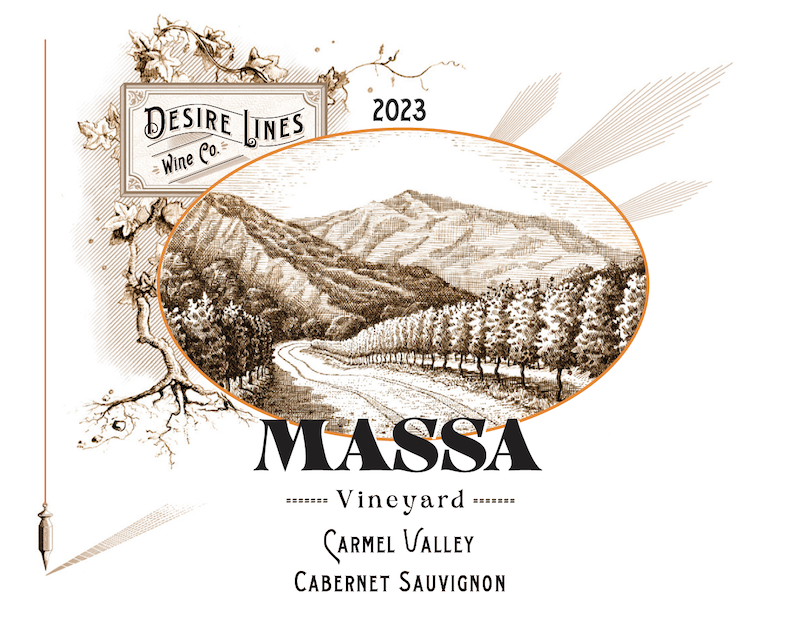
2023 Desire Lines Massa Vineyard Cabernet Sauvignon
Our 2023 Massa Vineyard Cabernet Sauvignon is graceful and intense – gracious enough to quietly adorn a celebratory meal; sufficiently powerful to lose oneself in contemplation of its luminosity. Aromatically, the wine is pure Massa – red berry fruits, a hint of tropical citrus, and Central Coast herbal garrigue soar from the glass. The palate is pure and supple, with refined tannins, an impression of sucrosity from perfectly ripe fruit (own-rooted old vines are something special), and a vein of refreshing acidity that runs through the center of the wine. This is a wine not to miss – you’ll thank us now and later.
MASSA VINEYARD
Massa Vineyard is a remarkable site – epic, and epically remote. The vineyard is set on the northern edge of Big Sur’s Ventana Wilderness; the road to the vineyard from the town of Carmel Valley is short, very steep, and absurdly twisty. To the south of Massa Vineyard, there’s nothing but miles and miles of BLM land and the remote mountain peaks of interior Big Sur. To the north, the vineyard’s most conspicuous neighbor is the Jamesburg Earth Station, a now defunct but massive satellite dish that once relayed worldwide footage of the Apollo 11 moon landing.
The satellite dish was built where it is, in the remote and wild Cachagua Valley, because radio interference is minimal – even radio signals have a hard time penetrating the valley.
Massa Vineyard was first planted in 1967 by Bill Durney; the vineyard was then known as Durney Vineyard. Cabernet Sauvignon was then the only variety planted at the vineyard, with cuttings supplied by Grandma Mirassou. The vineyard was the first vineyard planted in what is now known as the Carmel Valley AVA, and the wines from the vineyard enjoyed critical acclaim in the late 1970s and 1980s, even being poured for dinners at the White House during the Reagan administration.
The vineyard was purchased by the Heller family in 1993, following Bill Durney’s death. The Hellers re-named the vineyard Heller Estate and converted to organic viticultural practices – the vines have been farmed without the use of herbicides for nearly thirty years. The vineyard was sold again in 2018, purchased by Bill Massa, and re-named Massa Vineyard.
The vines at Massa Vineyard sit directly on the Cachagua Fault and are rooted in an unusual mix of granitic and metasedimentary rocks. I say unusual because granitic soils in California vineyards are relatively rare. While the granitic plutons that form the core of the Sierra Nevada are famous, there isn’t much granite to speak of in most Sierra Foothills vineyards, and none at all in the North Bay. The granodiorite and quartz monzonite that underlay Massa Vineyard come from the southern Sierra Nevada, thanks to the transform faulting action of the San Andreas Fault and the displacement of the Salinian Block.
Our Massa Vineyard Cabernet Sauvignon comes from Block 13, which is one of just a few remaining blocks of the original own-rooted 1971 planting with Mirassou budwood. Our Massa Vineyard Riesling, meanwhile, comes from Block 12 from vines planted in the early 1990s.
There are so many pieces of the puzzle that make Massa Vineyard such a singular place and that help explain why the wines from there are so utterly unique: old vines planted on their own roots in granitic soils; its cool mountainside location deep in the wilds of California’s Central Coast; thirty years of organic farming. Everything about Massa screams UNICORN. And most importantly, the vineyard speaks with a clear and beautifully resonant voice through its wines.